23. Classic French Onion Soup Comforting and Rich Meal
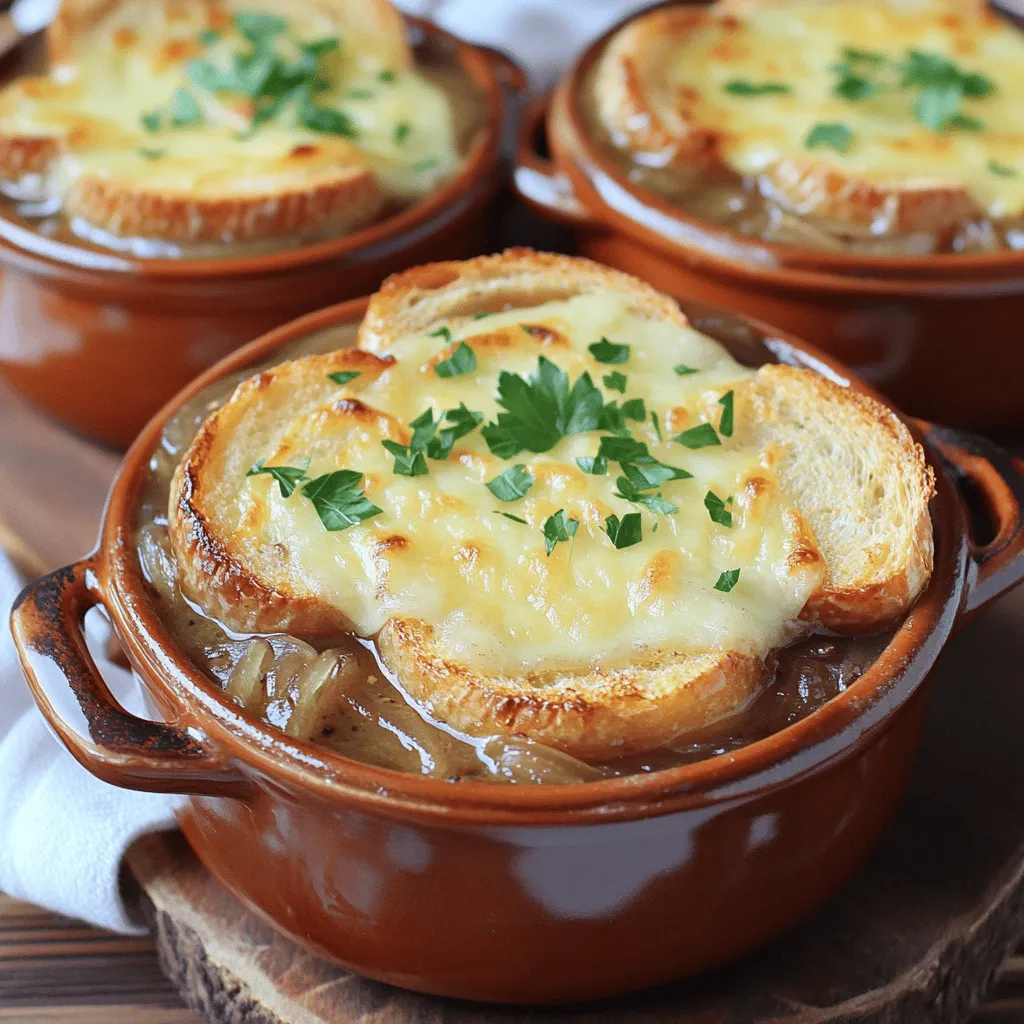
Warm, rich, and oh-so-comforting: Classic French Onion Soup is a meal that brings joy. With just a few simple ingredients, you can create a bowl of bliss that warms the heart. Imagine sweet, caramelized onions swimming in savory broth, topped with bubbly cheese and crusty bread. I’ll guide you through making this classic dish, step by step. Let’s dive into the world of French comfort food together!
Ingredients
Main Ingredients for Classic French Onion Soup
- 4 large yellow onions
- 3 tablespoons unsalted butter
- 2 tablespoons olive oil
- 4 cups beef broth
Additional Ingredients
- 1 teaspoon sugar
- 2 cups water
- 1 teaspoon dried thyme
- 1 loaf of crusty French baguette
Cheese and Seasoning
- 2 cups shredded Gruyère cheese
- Salt and pepper to taste
- Fresh parsley for garnish
When I make Classic French Onion Soup, I start with the main ingredients. Yellow onions are key. They give the soup its sweet and rich flavor. I use four large onions for the best taste. Butter and olive oil help cook the onions gently.
Beef broth adds depth. You can use vegetable broth for a vegetarian twist. I also mix in sugar to help caramelize the onions. It makes them golden and sweet. Water balances the broth and helps the flavors blend. Dried thyme adds an earthy touch.
The crusty French baguette is essential for topping the soup. It soaks up the broth while keeping its structure. For the final touch, I use Gruyère cheese. It melts wonderfully and creates a creamy layer.
Salt and pepper are crucial for seasoning. They bring out all the flavors. Finally, I garnish with fresh parsley. It adds a pop of color and freshness.
With all these ingredients, you can make a comforting bowl of Classic French Onion Soup.
Step-by-Step Instructions
Preparing the Onions
- Start by melting 3 tablespoons of unsalted butter and 2 tablespoons of olive oil in a large pot. Use medium heat for best results.
- Once the butter is bubbly, stir in 4 large, thinly sliced yellow onions. Make sure they are all coated well.
- To enhance caramelization, sprinkle 1 teaspoon of sugar over the onions. This helps them turn a nice golden brown.
Cooking the Soup
- After the onions are caramelized, season them with salt and pepper to taste. This adds depth to the flavor.
- Pour in 4 cups of beef broth and 2 cups of water. Add 1 teaspoon of dried thyme for an herbal note.
- Bring the mixture to a gentle boil. Then, reduce the heat to low and let it simmer for about 20 minutes. This allows the flavors to blend nicely.
Toasting the Bread and Serving
- While your soup simmers, preheat your oven to 425°F (220°C). This prepares it for toasting.
- Arrange sliced baguette pieces on a baking sheet. Toast them in the oven for about 5-7 minutes until they are crispy and golden.
- After the soup is ready, ladle it into oven-safe bowls. Place a piece of the toasted baguette on top of each bowl.
- Generously sprinkle 2 cups of shredded Gruyère cheese over the bread. This cheese melts beautifully.
- Finally, place the bowls under the broiler for about 3-5 minutes. Watch them closely until the cheese is bubbly and golden.
- Remove the bowls and garnish with freshly chopped parsley for a touch of color.Enjoy your comforting bowl of Classic French Onion Soup!
Tips & Tricks
Perfecting Caramelization
To reach that deep, rich color in your soup, slow cooking is key. Use low heat and give your onions time to transform. This can take about 30 to 40 minutes. Stir the onions every few minutes. This prevents them from sticking and burning.
Enhancing Flavor
Use high-quality broth for the best taste. A good beef broth adds a nice depth. If you want a vegetarian option, vegetable broth works well too. You can also boost flavor with herbs. Try adding thyme, bay leaf, or even a pinch of nutmeg. These will elevate your soup and bring out its natural sweetness.
Serving Suggestions
Presentation matters. Serve the soup hot in oven-safe bowls. Top each bowl with a piece of toasted baguette. Then, sprinkle shredded Gruyère cheese generously over the bread. Place the bowls under the broiler. Watch closely until the cheese bubbles and turns golden.
For a rustic touch, serve the bowls on a wooden board. Add a small extra bowl of toasted baguette slices on the side. This allows guests to enjoy more bread as they wish.
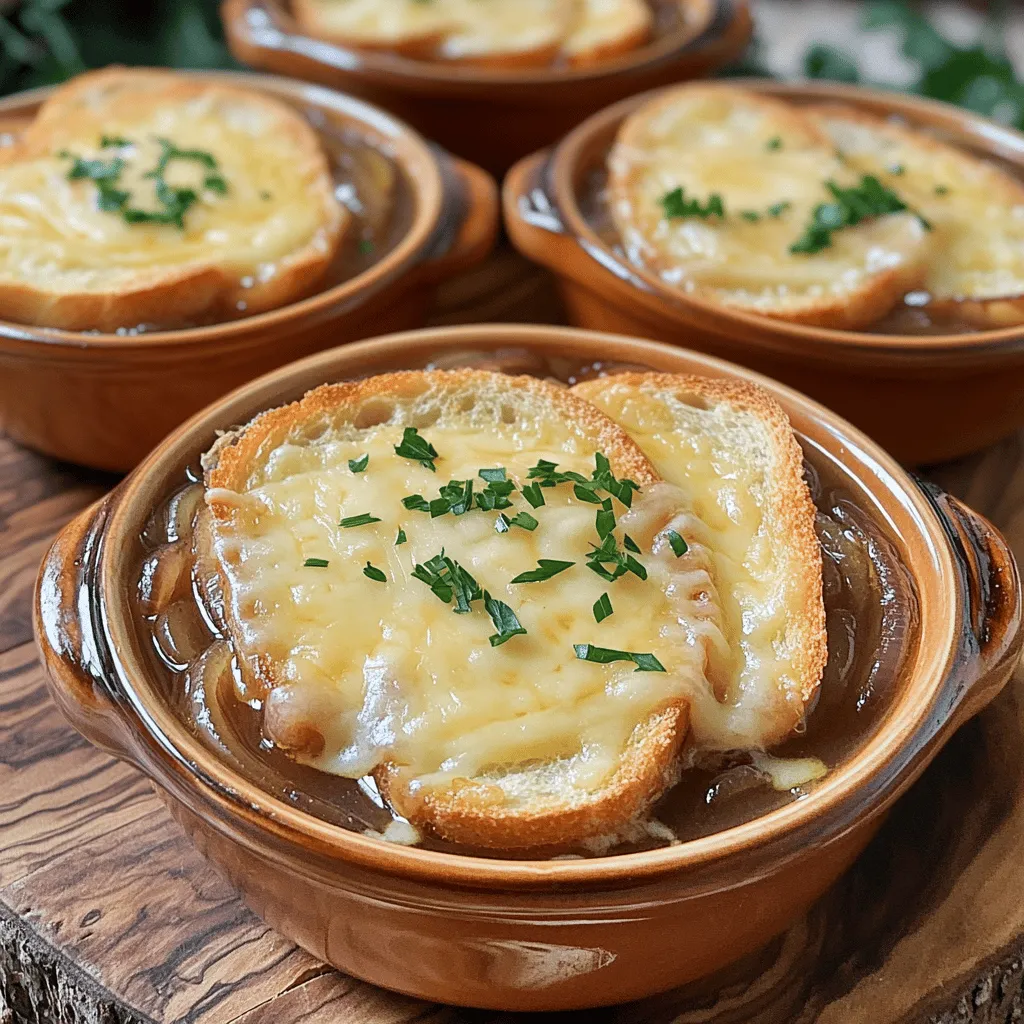
Variations
Vegetarian Option
You can easily make a vegetarian version of this soup. Simply use vegetable broth instead of beef broth. This swap keeps the rich flavor while making it meat-free. You can also play with cheese. Try mozzarella or a sharp cheddar for a different taste.
Gourmet Twists
Want to elevate your soup? Add a splash of wine or sherry. This will deepen the flavor and add a nice touch. You can also include mushrooms or other vegetables. Sautéed mushrooms give a lovely umami flavor that enhances the overall dish. Carrots or leeks can add sweetness too.
Different Cheese Alternatives
Gruyère cheese is traditional, but it’s not your only choice. You can use other melting cheeses like Emmental or fontina. If you want a dairy-free option, look for non-dairy cheeses. These can melt well and still offer that creamy texture.
Storage Info
Storing Leftovers
To keep your Classic French Onion Soup fresh, store it in airtight containers. Make sure to let it cool first. Place a lid on tightly to prevent air from getting in. This soup lasts in the fridge for about 3 to 4 days. If you want to enjoy it later, freezing is a great option.
Reheating Tips
When you are ready to eat your soup, reheat it carefully. I recommend using the stove for the best results. Pour the soup into a pot and heat it over medium heat. Stir it often to keep it from burning. You can also use the microwave. Just heat in short bursts, stirring in between. This will help keep the texture and flavor intact.
Freezing Classic French Onion Soup
To freeze your soup, let it cool completely. Then, pour it into freezer-safe containers. Leave some space at the top, as the soup will expand when frozen. It can stay good in the freezer for up to 3 months. When you want to eat it, take it out and thaw it in the fridge overnight. To reheat, follow the same steps as before. Enjoy your delicious soup anytime with these easy storage tips!
FAQs
How long does it take to make Classic French Onion Soup?
Making Classic French Onion Soup takes about 1 hour in total. You will spend 15 minutes preparing the ingredients. The cooking time is around 45 minutes. The longest part is caramelizing the onions. This step gives the soup its deep flavor.
Can I make this soup in advance?
Yes, you can make this soup in advance. To do this, cook the soup and let it cool. Store it in an airtight container in the fridge. It can stay fresh for about 3 days. When ready to eat, reheat it on the stove. Add the baguette and cheese right before serving. This keeps the bread crispy and the cheese gooey.
What is the best onion for French Onion Soup?
The best onions for French Onion Soup are yellow onions. They have the right balance of sweetness and flavor. You can also use sweet onions like Vidalia for a milder taste. Red onions can work too, but they will add a different color and flavor. Each type adds its unique twist to the soup, so feel free to experiment!
Classic French onion soup features rich flavors from onions, broth, and cheese. I outlined key ingredients, steps, and tips to make this dish shine. You can adapt it with vegetarian options or gourmet twists. Remember to store leftovers properly and reheat them for the best taste. Each bowl warms your spirit and impresses your guests. Enjoy making this comforting dish and share it with loved ones. Savor the delightful layers of flavor you create!
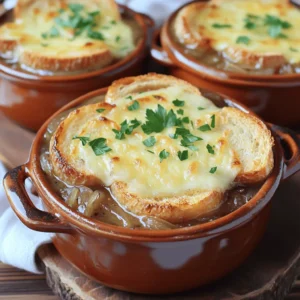


 for all the details! How can I ensure my shrimp don't overcook? To avoid overcooking shrimp, watch the color. When they turn pink, they are close to done. Cook for about 2-3 minutes on each side. Remove them from heat as soon as they are opaque. This helps keep them tender and juicy. Can I use frozen shrimp for this recipe? Yes, you can use frozen shrimp. Just thaw them first. Place them in cold water for about 15-20 minutes. Pat them dry before cooking. This ensures they cook evenly and absorb the sauce well. What can I substitute for soy sauce? If you need a substitute for soy sauce, try coconut aminos. It has a similar flavor and is often gluten-free. You can also use tamari for a gluten-free option. Both choices will still give you that umami taste. How to make the dish gluten-free? To make this dish gluten-free, use tamari instead of soy sauce. Ensure that all other ingredients, like butter and honey, are also gluten-free. This way, you can enjoy the same great flavor without gluten. What side dishes pair well with honey garlic butter shrimp? Honey garlic butter shrimp tastes great with rice or quinoa. You can also serve it with steamed veggies or a fresh salad. These sides balance the rich flavors of the dish, making a perfect meal. Can this recipe be scaled up for larger servings? Yes, you can easily scale up this recipe. Just double or triple the ingredients based on how many servings you need. Make sure your skillet is large enough, or use two pans to cook everything evenly. This keeps the shrimp from overcrowding and helps them cook well. This blog post offered a complete guide on making honey garlic butter shrimp. We explored each ingredient's role and shared cooking tips to ensure success. I highlighted variations and storage advice for leftovers. In conclusion, with fresh shrimp and the right techniques, you can create a flavorful dish. Explore your options and enjoy your culinary journey. Trust me, this recipe is worth trying!](https://dishtreats.com/wp-content/uploads/2025/07/4796c05b-30f7-4441-b7cb-ba0299151dfe-768x768.webp)

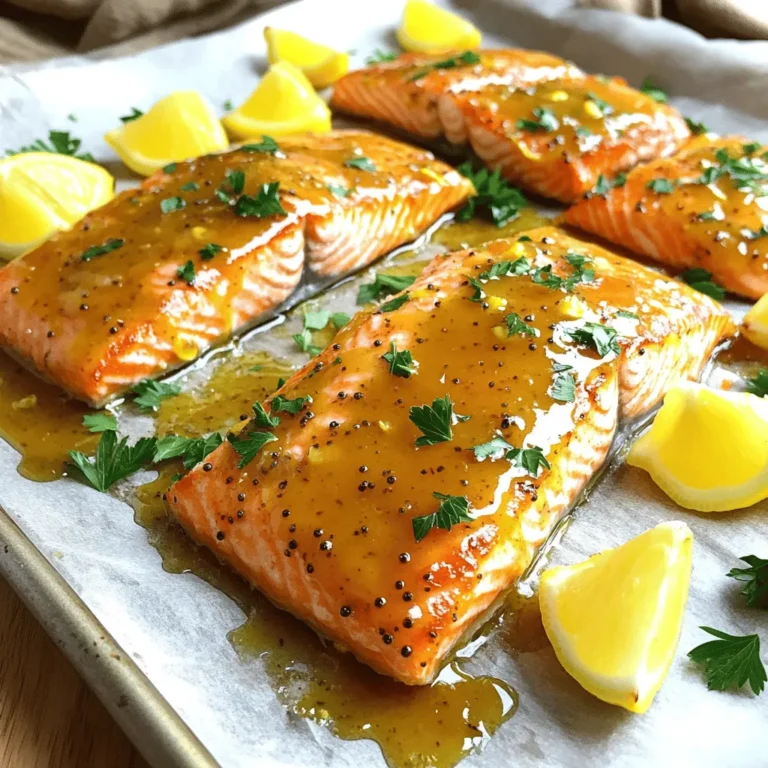
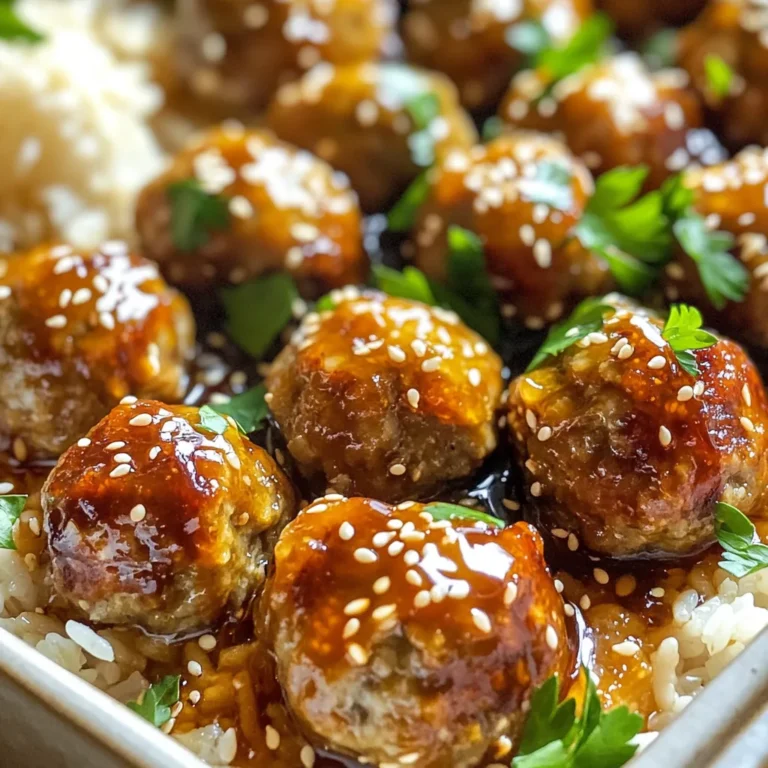
![- Shrimp: Use 1 pound of large shrimp. Fresh shrimp works best. Look for shrimp that is pink and firm. Avoid shrimp that smells strong or has a slimy texture. - Honey: Use pure honey for the best flavor. Clover honey or wildflower honey both work well. They add the right sweetness without being too strong. - Lime Juice: Fresh lime juice is best. It gives a bright, zesty flavor. If you use bottled lime juice, choose one with no added sugars for a true taste. - Soy Sauce: Use low-sodium soy sauce. This keeps the dish from being too salty. It adds depth without overpowering other flavors. - Fresh Cilantro: This herb adds a fresh taste. If you don’t like cilantro, try parsley as a mild substitute. - Lime Wedges: Serving lime wedges with the dish boosts the flavor. Squeezing fresh lime juice on the shrimp adds a nice zing. For the full recipe, check the details above. Start by whisking together the marinade ingredients in a bowl. This mixture includes honey, lime juice, soy sauce, minced garlic, minced ginger, and crushed red pepper flakes. Blending these ingredients well is key. It helps the flavors combine and coat the shrimp evenly. The honey adds sweetness, while lime juice gives a zesty kick. Soy sauce brings depth, and garlic and ginger add warmth. This blend will make your shrimp burst with flavor. Once you have the marinade ready, add the peeled and deveined shrimp. Make sure each shrimp gets a good coat of the marinade. Cover the bowl with plastic wrap and let it sit. The best time for marinating is 15 to 20 minutes at room temperature. This allows the shrimp to soak up the flavors. If you let it sit too long, the acid from the lime juice can change the shrimp's texture. Now it's time to cook! Heat olive oil in a large skillet over medium-high heat. Wait until the oil shimmers before adding the shrimp. This heat ensures a good sear. Add the marinated shrimp to the skillet, but remember to save any leftover marinade. Cook the shrimp for about 2 to 3 minutes without stirring. You want one side to turn pink and opaque. Flip the shrimp and cook for another 2 minutes until done. To finish, pour the reserved marinade into the skillet and let it cook for one more minute. This step helps the flavors come together. Remove the skillet from heat and season with salt and pepper. Your spicy honey lime shrimp is now ready to serve. Enjoy it warm, garnished with fresh cilantro and lime wedges. For the full recipe, refer back to the beginning! To cook shrimp just right, avoid overcooking. Shrimp turns pink and opaque when done. Look for a firm texture. If it curls tightly, it may be overcooked. Using a meat thermometer helps ensure perfect shrimp. The ideal internal temperature is 120°F. This temperature keeps your shrimp juicy and tender. To spice things up, adjust the heat levels to your liking. If you enjoy more heat, add extra crushed red pepper flakes. Start with a little and add more if needed. Consider adding aromatics for extra flavor. Garlic and ginger bring warmth. You can also try adding cumin or smoked paprika for a new twist. Use your creativity to enhance flavors you love. {{image_4}} You can try different proteins for this dish. Chicken works well if you prefer it. Tofu is a great choice for a plant-based option, absorbing flavors nicely. Just cut them into bite-sized pieces and follow the same cooking steps. For sweeteners, honey is fantastic, but maple syrup can add a nice twist. Agave syrup is another option to consider. Both alternatives will still give you that sweet touch without losing flavor. Want to switch up the citrus? You can use lemon or orange juice for a fresh taste. Both add a unique zing that pairs well with shrimp. Adjusting the spice level is easy too. If you want more heat, add extra crushed red pepper flakes. For less spice, reduce the amount or leave it out. This way, you can make the dish just how you like it! For the full recipe, check [Full Recipe]. To keep your Spicy Honey Lime Shrimp fresh, follow these tips. - Refrigerator Storage: Place leftovers in an airtight container. Use glass or plastic containers that seal well. Store the shrimp in the fridge for up to three days. Make sure they cool down before sealing to avoid moisture buildup. - Freezing Options: If you want to save shrimp for later, freezing is a great choice. Lay the shrimp flat in a single layer on a baking sheet. Freeze until solid, then transfer to a freezer-safe bag. This method prevents clumping and keeps shrimp fresh for up to three months. Reheating shrimp can be tricky. Here’s how to do it right. - Best Methods: The microwave is quick but can make shrimp rubbery. Instead, use a skillet for better results. Heat a little oil in the skillet over medium heat. Add the shrimp and cook until warmed through. - Maintaining Texture: To avoid rubbery shrimp, don’t overheat them. Just warm until they are hot but still tender. Stir gently to keep them from sticking to the pan. Enjoy your shrimp like they were just cooked! For the full recipe, check out the [Full Recipe]. You can tell shrimp is done by its color and texture. Cooked shrimp turns pink and becomes firm. They should look opaque, not translucent. The safe internal temperature for shrimp is 120°F (49°C). Use a meat thermometer for the best results. Yes, you can prep this dish ahead. Marinate the shrimp and store it in the fridge. This can last for up to 2 hours. If you want to keep it longer, freeze the marinated shrimp. Thaw in the fridge before cooking. Pair this shrimp with rice or a fresh salad. Here are some great options: - Steamed jasmine rice - Quinoa salad - Grilled vegetables - Avocado slices These sides balance the shrimp's spice and sweetness. You can also serve warm tortillas for a fun twist. Check the Full Recipe for more details! You learned how to make Spicy Honey Lime Shrimp with fresh ingredients and easy steps. We talked about the best shrimp, types of honey, and the importance of lime juice. I shared tips on marinating and cooking to get shrimp just right. Remember to check for doneness and how to store leftovers. You can also try new flavors by changing ingredients. Enjoy your dish, share it, and impress your friends. Simple cooking can lead to big smiles!](https://dishtreats.com/wp-content/uploads/2025/07/32f525eb-631f-4155-a120-c5a025aaa712-768x768.webp)